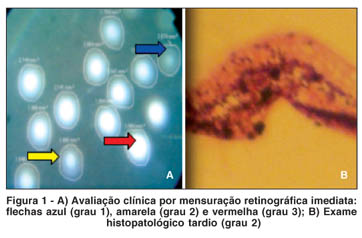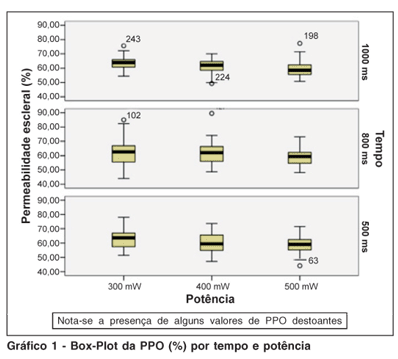PURPOSE: Retinal photocoagulation under poor visualization condition is often required. Transscleral infrared laser can be used as an alternative to regular transpupillary treatment. Based upon retinographic measurements, we proposed to estimate the reproducibility as well as ocular wall permeability rate for this treatment. Our primary goal was to evaluate whether this technique can deliver adequate photocoagulation at predetermined parameters without direct retinal visualization. METHODS: In New Zealand pigmented rabbits, optimal transscleral infrared diode laser settings were administered to the right eye. With the same parameters, transpupillary photocoagulation was repeated in the left eye. Retinographic and clinical examinations were performed immediately and two months later. RESULTS: Ocular wall permeability rate varied between 58.95 and 63.87%. Average permeability using a power of 300 mW (63.14%) was found to be higher than that encountered before its enhancement up to 500 mW (59.11%), (P<0.05). CONCLUSIONS: Setting parameters showed dose-response effect. No retinal hole or retinal detachment was noticed in any rabbit. Transscleral infrared photocoagulation appeared to be a reproducible and secure method in the experimental model.
Retina; Retinal diseases; Laser coagulation; Photoreceptors; Pigment epithelium of eye; Vision, low; Ophthalmologic surgical procedures; Dose-response relationship, radiation; Animals; Rabbits






